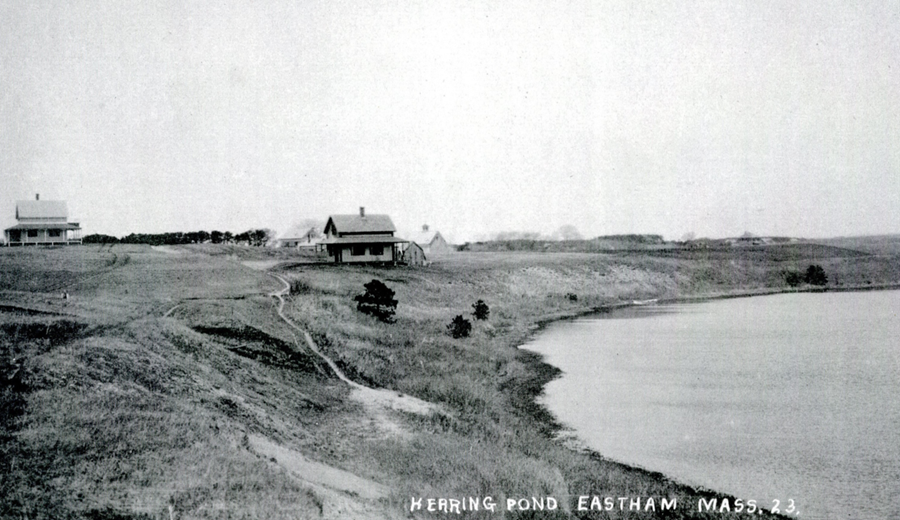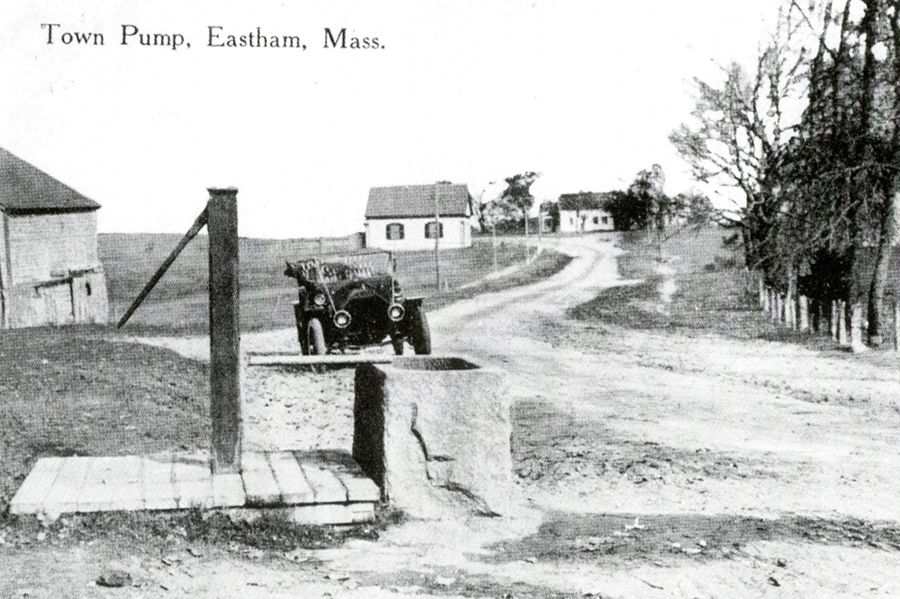EASTHAM — Somewhat surprisingly, given that Cape Cod is an enormous glacial sandpile, the first European settlers to build permanent homes on the Outer Cape were in search of dirt.
The population of Plymouth colony had ballooned by the 1640s, and the soil farther inland was seen as unsuitable for agriculture. Eastham, meanwhile, had what early settlers described as “excellent black mould,” deep as a shovel’s blade. It seemed like the perfect place to settle.
Within two generations, however, the environment of the Outer Cape was already changing, according to Cape Cod National Seashore historian Bill Burke. Settlers had cut down trees and opened up the landscape, he says, and topsoil began to be depleted. Farming became increasingly difficult, and by 1800 Cape Codders had turned to the sea for sustenance and income.

This change, so integral to the history of Cape Cod, began with the attitudes of the very first English settlers, argues John Chenoweth, an anthropologist at the University of Michigan Dearborn.
As the Independent reported last month, Chenoweth was the lead archeologist on an excavation at the site of the house belonging to Deacon John Doane, the patriarch of one of Eastham’s first settler families, that took place in 2019 and 2022. In addition to investigating the house itself, Chenoweth’s team studied the environmental archaeology around the house to understand the effects of European settlement on the landscape.
Eastham’s first seven families, Chenoweth says, viewed Cape Cod’s nature not as a resource to be managed but as a wilderness to be tamed in accordance with God’s will, and Chenoweth’s team found plenty of evidence showing how this belief affected Eastham’s environment.
Their paper on the environmental archaeology of the Doane site has been accepted by the journal Historical Archaeology and will likely be published early next year, but Chenoweth discussed the prepublication version with the Independent.
Changing the Land
It can be difficult to imagine how different the Outer Cape looked in the early 1600s at the outset of European colonization. What is now Eastham was a patchwork of open meadows and mixed forests made up of red maple, beech, oak, white pine, and pitch pine.
The landscape was maintained by the farming practices of the Indigenous Nauset people, Burke says. Meadows were created by purposely burning sections of forest; the Nauset used the resulting clearings to cultivate corn and other crops.

While most of the Outer Cape was likely occupied only seasonally by the Nauset and their ancestors, a village extended all the way around Nauset Marsh in 1605, when French cartographer Samuel de Champlain mapped Cape Cod. He noted the area’s fresh and saltwater resources and called Nauset Harbor “Port de Mallebarre” on his map.
To the later English settlers, the landscape was theirs to exploit and convert. They believed that “God gave them these resources and their responsibility was to use them to improve the land,” Chenoweth says. “They’ve got to cut down these forests and turn them into nice tilled fields.”
Archaeology at the site shows that land clearing happened early and fast. The team could identify which plants grew when by examining phytoliths: microscopic “stones” formed within and between plant cells that are distinctive between groups of plants. Sediment from the time of Doane’s settlement included corn phytoliths, indicating that the crop had been quickly adopted from Indigenous communities by English settlers.
The team also found a near absence of woodland phytoliths, indicating that deforestation happened fast. This could have been achieved through “girdling,” which involved killing trees by cutting a ring through a tree’s bark and vascular tissue around its base, or by burning, as Chenoweth’s team found charcoal deposits dated around the beginning of Doane’s occupation.
No Wild Meat
The most striking finding, Chenoweth’s team wrote, was a near complete lack of evidence that the Doane family hunted, fished, or ate any wild animals.
The team found no fish bones or scales at their dig site, and while they found 95 mammal bones or bone fragments, the ones that could be identified were all cows, sheep, and pigs. There were three bird bones that could possibly belong to wild turkeys, but more than likely came from chickens, the authors wrote.
Even seashells were rare. Less than 6 percent of the artifacts at the site were shells, and the team found no extensive middens, or piles of discarded shells.
Compared to other archaeological sites from later periods when shellfish eating was more common, this was a very small amount, the authors wrote, indicating a low reliance on shellfish for food.
“The reason people go to Cape Cod now is for the beach and the clams, right?” Chenoweth says. “And I think it was very much the opposite of that for the earliest European settlers.”

Chenoweth suspects the reason for avoiding seafood and wild meat was tied to the settlers’ goal of taming the land rather than feeding themselves from the “untamed wilderness.”
“They were fundamentally looking for land to till,” Chenoweth says, adding that farming was perceived as a God-given duty. By showcasing his house surrounded by his “improved” land, Doane signaled his moral virtue and his prosperity to his neighbors.
Turning to the Sea
There was enough topsoil and timber here for Eastham’s first settlers to grow crops, graze animals, and build houses. But it didn’t take long for problems to arise.
According to Burke, as early as the 1680s towns began to pass laws prohibiting grazing in certain areas to preserve topsoil. As forests shrank, people worried that timber would soon run out as well, Chenoweth says. In the 1720s, overgrazing in Provincetown had loosened the sand dunes, which then blew into town and threatened to swallow entire buildings — something Burke calls “an early example of an environmental disaster.”
Intensive farming and the loss of forest cover soon allowed the wind to strip topsoil away almost completely. Corn could no longer grow in Eastham and was replaced by asparagus, turnips, cranberries, and other plants that favor sandy soil. By 1802, a writer described Eastham as “a barren tract” that had “appearances of desolation.”
Without other natural resources such as mineral deposits or rivers to power mills, settlers looked to the sea for both food and income, Burke says. Fishing and whaling became the only resource remaining, and Cape Cod’s maritime tradition was born.
This transition happened long after John Doane’s lifetime — he died in 1685, when topsoil was probably still abundant enough for crops. But Chenoweth argues that the Cape’s pivot to seafaring is directly tied to the deliberate deforestation by Doane and his fellow settlers.
“A lot of how we got where we are today was figured out in that early chunk of time,” Chenoweth says.



